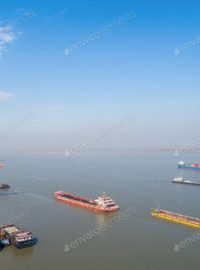Fiber optic sensors
Conventional electronic sensors frequently come up against the limits of technology because interfering effects such as high voltages or EMI limit the operability of the systems. Particularly in these environments our Fiber Optic Sensors can create new possibilities for reliable measurements. Fiber Optic White Light Polarisation Interferometry (WPLI) is patented fiber optic technology which enables precise measurements to be made in the most challenging of applications. It offers maximum flexibility in sensor design such that reliable measurements can be generated even in extremely unfavourable environments.Fiber Optical Sensors
Fiber Optic Sensor technology enables precise measurements to be made in the most challenging applications.

How does WLPI work? WLPl technology stands for white Light polarization interferometry and is a technique used in fiber optic sensors. These can be used for measuring various parameters and are extremely suitable for use in heavy duty applications or for use in hazardous environments. These sensors offer a number of advantages over the standard fiber technology. The white light polarization interferometry (WLPI) technology offers a great degree of flexibility in the design of various types of fiber optic transducers. Therefore numerous measurement and sensing applications can benefit from this advantageous feature combined with its outstanding performances. The WLPI technology is aimed to respond to the most demanding and hazardous applications! Therefore perfectly suited for civil, offshore and oil & gas industries.
Fiber optic sensors are made up of two main parts: the fiber optic transducer (also called the fiber optic gauge or the fiber optic probe) and the signal conditioner (also called the readout or the interrogation unit).
The fiber optic transducer is made of a customized body which contains an optical device that is sensitive to the physical magnitude to be measured, the measurand. For non-distributed sensors, the sensitive part of the transducer is usually mounted at the tip of an optical fiber that connects to the signal conditioner unit. The latter is used for injecting light into the optical fiber, receiving the modified light signal returned by the transducer as well as for processing the modified light signal and converting the results into physical units of the measurand.
The fiber optic transducer is made of a customized body which contains an optical device that is sensitive to the physical magnitude to be measured, the measurand. For non-distributed sensors, the sensitive part of the transducer is usually mounted at the tip of an optical fiber that connects to the signal conditioner unit. The latter is used for injecting light into the optical fiber, receiving the modified light signal returned by the transducer as well as for processing the modified light signal and converting the results into physical units of the measurand.



